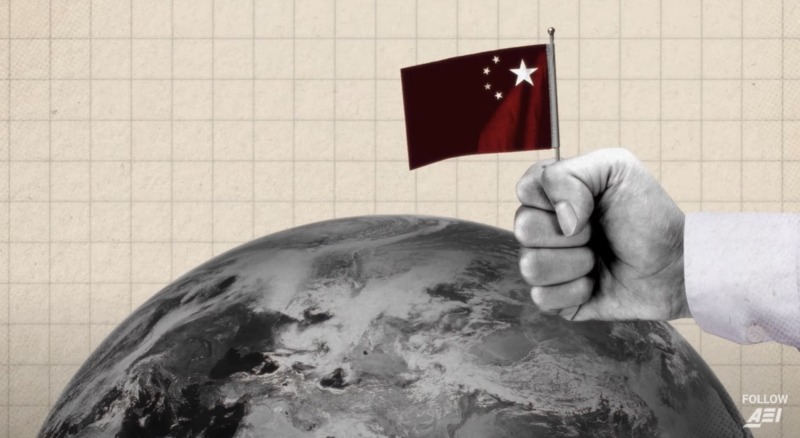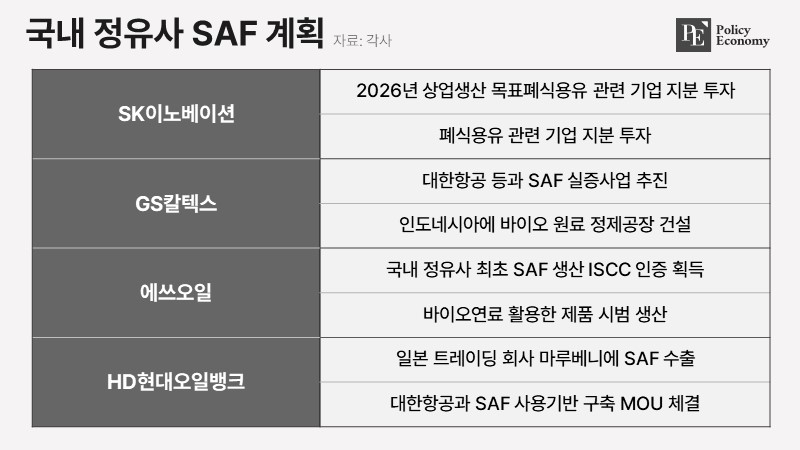[동아시아포럼] 미국과 중국의 디커플링 위험성
美中간 무역분쟁의 지속, 기술경쟁의 심화와 양자무역 증가세 둔화가 특징 반도체 등 핵심기술 영역을 중심으로 한 미국의 규제 확대 글로벌 경제의 장단기적 파급효과도 고려해야
[동아시아포럼]은 EAST ASIA FORUM에서 전하는 동아시아 정책 동향을 담았습니다. EAST ASIA FORUM은 오스트레일리아 국립대학교(Australia National University) 크로퍼드 공공정책대학(Crawford School of Public Policy) 산하의 공공정책과 관련된 정치, 경제, 비즈니스, 법률, 안보, 국제관계에 대한 연구·분석 플랫폼입니다.
저희 폴리시코리아(The Policy Korea)와 영어 원문 공개 조건으로 콘텐츠 제휴가 진행 중입니다.
미-중간의 경제적 상호의존 관계가 최근 들어 무너지고 있는 추세다. 지난 2022년 양국간 무역규모 측면에서는 기록적인 수치를 나타냈지만 상호의존성은 약화되는 모습이다. 양국 정부간의 긴장이 강화되면서 양국의 투자자들이 상대국 시장에서 발을 빼고 있기 때문이다.

디커플링으로 인한 기술 경쟁의 심화와 양자 무역 증가세 둔화
디커플링(Decoupling·두 집단 간의 유사한 움직임이 사라지는 것)의 여파가 가장 큰 영역은 기술 분야다. 미국과 중국 간의 안보 경쟁은 각국의 국내 산업 및 기술 발전에 대한 접근에 보다 더 깊게 관여하고 있다. 기술 경쟁은 양국 모두에 경제적 타격을 입히는 것은 물론, 국제 경제에도 상당한 영향을 미칠 것으로 예상된다.
관세 분쟁과 미국의 대(對)중국 기술 제제 강화에도 불구하고 양국간 무역 규모는 꾸준히 증가세를 유지해 왔다. 그러나 최근 들어 증가 속도가 둔화되면서, 미국의 대외무역 성장률의 1/5 수준까지 줄어든 상황이 됐다. 미국 시장에서는 중국산 수출품의 시장 점유율이 떨어지는 추세며, 중국도 해외 수입품을 미국 이외의 시장에서 구매하기 시작했다. 높은 관세 탓에 미-중 양국간 무역 구성도 상품 재화에서 서비스 재화로 무게추가 옮겨가는 모양새다.
양자간 무역 규모 수치가 감소세라 하더라도 상호의존성 축소를 섣불리 단정 짓기는 어렵다. 실제로 미중 관세 전쟁이 시작된 이래 중국의 대동남아 직접투자는 폭발적으로 증가해 2020년에는 1,280억 달러를 기록했고, 미국의 대동남아 수입 역시 빠른 추세로 확대되고 있다. 즉 양국간 직접 무역 비중의 일부가 동남아를 통한 복합적 상호의존관계로 바뀐 것이다.
베트남의 수출에서 중국이 차지하는 수입 비중은 2017년에서 2021년 사이 약 2배로 늘었다. 같은 관점에서 동남아에 자리 잡고 있는 중국 기업들도 대미 수출품에 들어가는 부품의 상당량을 중국에서 조달하고 있다. 미국의 동남아 수입품 중 중국산 제품의 비중이 증가할 가능성이 높은 만큼 대중국 직접 수입의 둔화를 상쇄할 수 있다는 의미다.
직접투자 감소와 ‘해외투자 감시장치’
미국 무역대표부에 따르면 미국 기업들의 누적 대중국 직접투자는 2020년에 1,240억 달러에 달했다. 하지만 누적 지표의 증가는 현재 미중간 점진적으로 감소하고 있는 직접투자의 실태를 제대로 반영하지 못한 것으로 보인다. 주중 미 상공회의소의 ‘제25차 연간 중국 기업 조사’에 따르면 미중 간 무역전쟁 및 패권 경쟁으로 인한 긴장 고조, 중국 내 산업 규제의 비일관성, 임금 상승 등 요인들의 복합적인 작용으로 중국을 소위 ‘우선순위 투자처’로 간주하는 미국 기업이 점점 줄어들고 있다. 또한 해당 조사는 중국에서 영업 중인 미국 국적 기업들의 대다수가 중국에 잔류하는 것을 선택하되, 애플과 구글을 포함한 일부 기업들이 중국 밖으로 공급망을 전환하려는 움직임을 보이고 있는 점도 지적했다. 이는 지금까지 증가해 왔던 미국의 대중국 직접투자가 감소 국면에 접어든 것으로 해석할 수 있다.
미 행정부가 중국으로의 해외 투자에 대해 잠정적인 제한을 가하게 되면서 대중 투자 전망 역시 불투명해진 상황이다. 바이든 행정부는 자국 투자자들의 투자가 직간접적으로 중국의 반도체 등 핵심 부문 기술 발전을 돕고 있을 가능성을 우려하면서 중국으로의 투자 흐름을 억제할 수 있는 메커니즘인 ‘해외투자 감시장치’의 개발에 나섰다. 그러나 중국으로 유입되는 전체 직접투자에서 미국 기업들이 차지하는 비중이 비교적 작은 만큼 해외투자 감시장치가 중국 핵심기술 산업의 발전 속도 둔화라는 소기의 목적을 효과적으로 달성하기 위해서는 다른 국가들의 유사한 투자 억제 장치의 개발 및 참여가 보장돼야 한다. 그러나 미국은 아직까지 통제 장치의 필요성에 대해 다른 국가들의 공감대를 이끌어내지 못하고 있으며, 이는 ‘해외투자 감시장치’의 실행을 지연시키고 있는 결정적 이유로 풀이된다.
중국 기업들에 대한 미국 행정부의 규제 강화
2021년 이후부터 중국 투자자들과 관련된 미국외국인투자위원회(CFIUS)의 조사가 급증한 것으로 나타났다. 현재 미국에서 영업 중인 중국의 민영·국영 기업들은 다른 어느 국적 기업들보다도 엄중한 조사와 감시를 받는데, 최근의 가장 대표적인 사례는 미국 의회에서 초당적 공격의 중심에 선 ‘틱톡’이다. 미국인들의 개인정보를 탈취해 이른바 ‘중국 공산당의 무기’로 활용하고 있다는 비난을 받은 틱톡은 현재 자국 모회사인 바이트댄스로부터 분리되지 않는 한 미국에서의 영업이 금지될 위기에 봉착해 있다.
특히 기술 분야에서의 미중 디커플링 현상은 갈수록 심화하고 있다. 2018년 중국을 대표하는 IT 기업 화웨이의 대미 수출에 대한 규제를 가한 트럼프 행정부의 제재를 필두로 미국은 지난 5년간 중국에 대한 자국의 규제를 단계별로 강화하고 있다. 2022년 말 특별 인증 제재 대상자(SDN) 목록에 있는 약 400명의 중국인에게 미국과 관련된 어떠한 거래도 하지 못하도록 금지령이 내려진 것 역시 기술 분야에서 미중간 경쟁 심화의 연장선상에 놓인 조치로 파악된다.
아울러 2023년 3월 미국의 ‘제재 대상 기업명단(Entity List)’에 오른 665개의 중국 기업들은 미국으로부터 특정 기술과 상품에 대한 제한을 받았고, 이에 중국은 2020년 9월 마련된 ‘신뢰할 수 없는 기업명단(Unreliable Entity List)’에 미국을 추가하며 응수했다. 지금까지 해당 리스트에는 2개의 미국 항공우주 및 방위산업 기업들이 등재돼있으며, 이들은 중국과의 무역은 물론 중국으로의 투자 역시 금지된다.
핵심 기술 영역으로 확대된 규제와 향후 국제 경제 전망
미중간 디커플링은 제이크 설리번(Jake Sullivan) 미국 백악관 국가안보보좌관이 미국의 대중국 경제정책상 중대한 변화를 발표하면서 더욱 심화됐다. 발표에 따르면 미국은 더 이상 수출 규제의 설계를 통한 중국 핵심 기술 발전 속도의 둔화에 만족하지 않고, 중국 핵심 기술 발전 수준을 현 수준에서 동결시키는 한층 더 공격적인 목표를 설정했다. 중국의 기술을 동결시킨 상태에서 미국의 기술을 다양한 영역으로 지속 확장함에 따라 양국의 기술 격차를 극대화해 중국을 뒤처지게 만든다는 구상이다.
실제로 2022년 10월 바이든 행정부는 자국의 안보 우려와 직결되는 ‘중국의 첨단 반도체 생산 능력 확보’를 늦추기 위해 중국 반도체 회사들의 특정 장비와 서비스에 대한 수출 규제를 발표한 바 있다. 일본과 네덜란드도 미국의 대중국 반도체 부품 수출 제한 움직임에 동참하고 있다.
반도체 영역, 양자 컴퓨팅, AI 등 여타 핵심 기술 영역에서 ‘가능한 최대의 우위’ 확보라는 미국의 명시적 목표 설정을 고려할 때 중국 시진핑 주석의 “미국이 중국을 봉쇄하고, 포위해 억압하려고 한다”는 발언은 충분히 납득 가능하다. 중국은 핵심 기술 영역에서 대외 의존성을 극복하고 이른바 ‘기술적 자급자족’을 달성하고자 자국 첨단 산업에 천문학적인 금액을 투입하고 있다. 러시아의 우크라이나 침공과 그에 따른 서방의 대러시아 경제 제재 역시 중국 지도층으로 하여금 자국이 대만과 재통일을 기도할 경우 비슷한 종류의 제재가 부여될 것을 우려하게 만들어 기술적 자급자족을 추구하는 유인으로 작용한 것으로 해석된다.
디커플링은 국제 경제성장에 있어서도 심각한 우려를 불러일으킨다. 2021년 국제통화기금(IMF)은 디커플링이 국제적 경제성장에 미치는 직접적 영향으로 △글로벌 무역 감소 △자원의 비효율적 배치 △초국경적 지식 융합의 감소를 제시하기도 했다.
디커플링은 보호무역주의 및 ‘프렌드 쇼어링(friend-shoring·우방국끼리 공급망을 구축해 글로벌 공급망 문제를 해결하는 것)’과 함께 전 세계에 상당한 경제적 손실을 가져올 수 있다. 중국이 내세운 ‘자급자족’ 정책은 자유무역에 비해 투입되는 비용도 상당할뿐더러 성공이 보장되는 것도 아니다. 자급자족과 디커플링으로 대표되는 ‘기술-민족주의’를 억제하고 종전과 같은 상호의존적 양자관계를 유지하는 것이 미중 양국의 이익에 부합함에도, 미중 패권 경쟁에서 파생된 다양한 상호견제 조치로 얼룩진 정치적 현실은 자유무역의 유지를 극도로 어렵게 만들고 있다.
영문 원저자는 피터슨 국제 경제 연구소(PIIE)의 니콜라스 라디(Nicholas R. Lardy) 선임 연구원과, 티안레이 황(Tianlei Huang) 연구원입니다.

Is US–China decoupling heading in a dangerous direction?
The US and Chinese economies are closely interconnected, but their ties are eroding. Despite record levels of US–China bilateral trade in 2022, the trading relationship is becoming less interdependent. Rising tensions between Washington and Beijing are driving US and Chinese investors away from each market.
Perhaps the most consequential aspect of US–China decoupling is in technology. Security competition between the United States and China is increasingly embedded in approaches to domestic industrial and technological development. This tech war will hurt both economies and have profound global implications.
Bilateral trade between the United States and China continues to expand despite the trade-war tariffs and escalating tech restrictions that the United States has imposed on China. But bilateral trade expansion is slowing and is growing at only one-fifth the pace of the overall US trade expansion. The share of US imports coming from China has declined, while China has shifted some imports of foreign goods away from the United States. The composition of US–China bilateral trade has also shifted away from goods with the highest tariffs.
Data on bilateral trade alone does not show the full picture of US–China commercial ties. Since the tariff war began, China’s direct investment in Southeast Asia has skyrocketed — reaching US$128 billion in 2020. US imports from Southeast Asia are also expanding rapidly.
But China’s share of the imported content in Vietnam’s exports nearly doubled from 2017 to 2021. Similarly, Chinese firms elsewhere in Southeast Asia source a large share of the parts and components in their US exports from China. The Chinese content of US imports from Southeast Asia is likely on the rise, offsetting the slowdown in direct US imports from China.
Cumulative direct investment in China by US firms reached US$124 billion in 2020, according to data from the Office of the United States Trade Representative. But the 25th annual China Business Survey by the American Chamber of Commerce in China shows that a declining share of US companies see China as an investment priority because of rising tensions, a lack of regulatory consistency in China and rising costs of labour.
The survey also shows that though most US firms operating in China plan to stay, a rising share are considering shifting supply chains out of China — including Apple and Google.
Prospects of US investment in China are clouded by potential US restrictions on outbound investment to China. The Biden administration is concerned that US investors may be helping to advance Chinese technology in critical sectors and is developing a mechanism to constrain the flow of US investment into China. But because US firms constitute a relatively small portion of total foreign direct investment, such a screening scheme will only be effective if other states are involved. The difficulties of convincing others to develop similar programs may be causing the delay in the launch of a US outbound investment screening scheme.
Private and state-owned Chinese firms are facing greater scrutiny in the United States. The Committee on Foreign Investment in the United States has seen its investigations involving Chinese investors surge since 2021. Among all jurisdictions, investors from China face the most scrutiny. The most recent high-profile case involves TikTok, whose CEO was recently grilled by the US Congress. The company now faces the risk of being banned in the United States unless it splits from its Chinese parent company ByteDance.
US–China decoupling in technology is undoubtedly intensifying. Beginning with Trump’s restrictions on US exports to Huawei in 2018, the United States has been stepping up its tech restrictions on China in the past five years. By the end of 2022 about 400 Chinese persons on the Specially Designated Nationals and Blocked Persons list were prohibited from engaging in any transactions involving US persons.
In March 2023, 665 Chinese companies on the US Entity List were subject to restrictions on the flows of certain technology and goods from the United States. China responded with its own Unreliable Entity List in September 2020. So far only two US aerospace and defence companies are listed and prohibited from trading with or investing in China.
US–China technological decoupling escalated in September 2022 when US National Security Advisor Jake Sullivan announced a profound shift in US economic policy on China. Rather than designing export restrictions to keep China’s critical technologies a generation behind that of the United States, the US objective is now to freeze China’s current level of technological development. As the US tech frontier continues to expand, the gap between the two countries would widen, causing China to fall further behind.
In October 2022, the Biden administration announced export restrictions on certain equipment and services to Chinese semiconductor companies, aiming at slowing China’s ability to produce advanced chips — a US national security concern. Japan and the Netherlands have joined the US effort in restricting exports of semiconductor manufacturing equipment to China.
Given the stated US goal in maintaining ‘as large of a lead as possible’ in semiconductors, quantum computing, artificial intelligence and other critical sectors, it is not surprising that China’s President Xi Jinping has stated that the United States attempts to contain, encircle and suppress China. China is now pouring hundreds of billions of dollars into cutting-edge technologies to achieve self-sufficiency. The West’s economic sanctions following Russia’s aggression against Ukraine worry Chinese leaders who fear similar sanctions could be applied to China if it pursues reunification with Taiwan.
Technological decoupling raises serious concerns about global growth in the short and long term. A 2021 IMF study identifies three direct channels where technological decoupling can affect global growth — reduced global trade flows, misallocation of resources and less cross-border knowledge diffusion.
Together with trade fragmentation and ‘friend-shoring’, technological decoupling can lead to significant economic losses globally. The drive for self-sufficiency is costly and success is not guaranteed. Reining in techno-nationalism is in the United States and China’s interests, but the political reality in both capitals is making rational policy formulation extremely difficult.



























